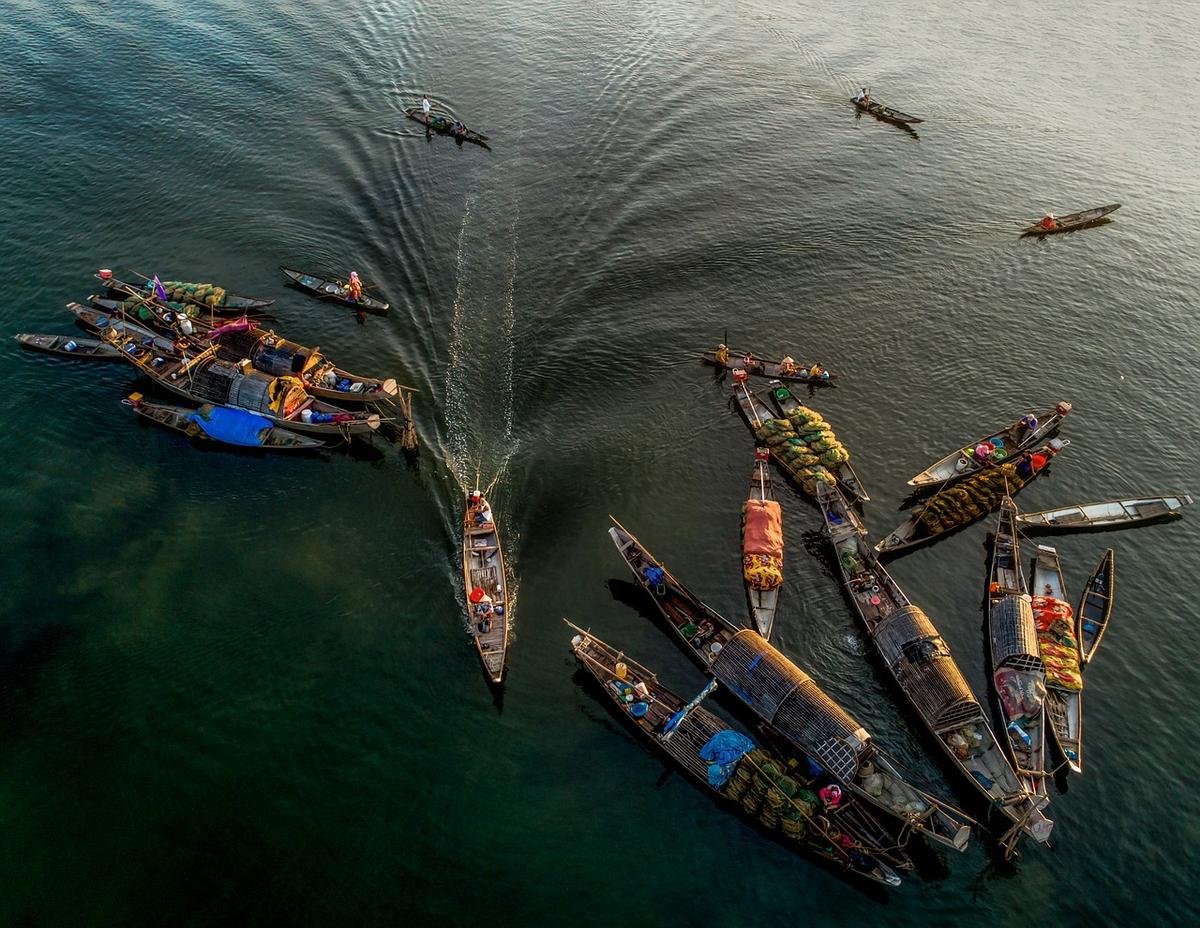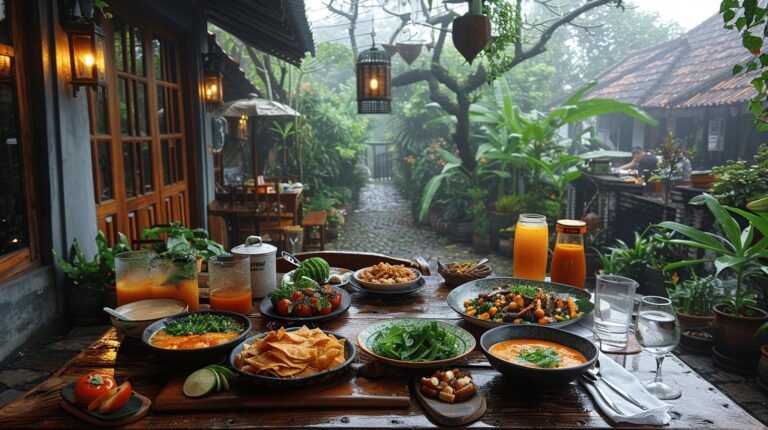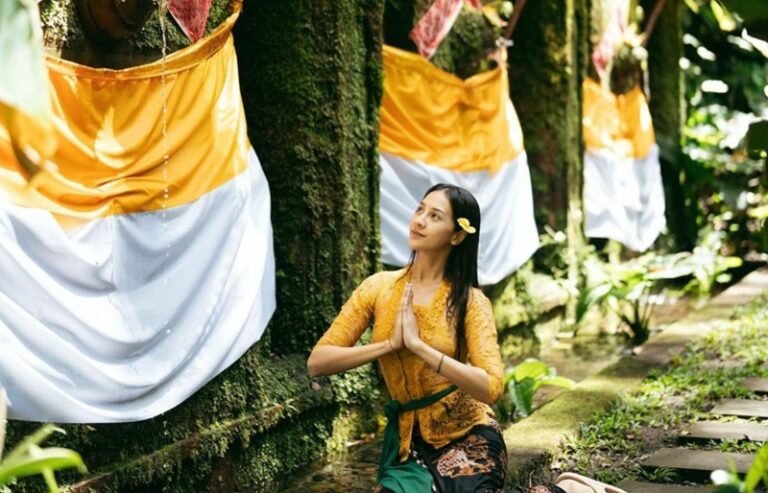Ubud’s Wos River Beckons with Crystal-Clear Streams and Tranquil Green Canopy
A clear-flowing river winds through Lodtunduh Village in Bali’s Gianyar Regency. The Wos River has long been prized by locals for its sparkling water and calm setting. Its natural charm provides the perfect spot for anyone looking to break free from everyday stress. Tall trees line the banks, filtering sunlight and adding to the calm feel. For residents of that part of Bali, the river remains one of the most treasured natural features in the area.
Just a quick 25-minute drive from Ubud’s center, the Wos River offers a fast escape into eastern Bali’s countryside. Rice terraces spread out beside narrow paths that guide visitors toward the water. Along the way, guests find themselves surrounded by fresh air, verdant fields, and the gentle murmur of flowing streams. Simple wooden benches appear now and then beneath shady trees, inviting moments of rest before reaching the riverbank.
Travelers head first to marked parking spots scattered around Lodtunduh Village. Those spots sit close to local homes yet remain safe and quiet. A short walk along a dirt track leads deeper into the placid village scene. At times, the ground slopes gently down, guiding feet toward the river’s edge. Even though the trail stays open through most of the year, rain can cause slick patches that require surefooted steps.
Heading down the path, the first glimpse of emerald rice paddies comes with the spice of rural life: clucking hens, distant temple bells, and winds passing through palms. A chorus of songbirds accompanies each step. The fresh scent of damp earth mixes with sweet grass. When water sounds grow louder, excitement builds. That blend of sights, sounds, and scents sets a mood of calm anticipation before the river itself appears.
Once at the bank, the scene shifts to pure serenity. Quiet reigns as the clear water flows over smooth stones. Visitors can lower their feet into the cool stream or sit on a log with backs pressed against tree trunks. No loud calls or music echo here—only nature’s sounds. The air feels crisp and clean. Bright green moss clings to rocks at the river’s edge. Each pause in movement or thought seems to deepen one’s sense of ease.
Lounging by the water remains the main draw, yet guests often bring tubes to float along the gentle current. Watching sunlight dance beneath tree branches adds to the pleasure of a leisurely float. A change of clothes proves useful when soaking in the stream becomes too tempting. Permanent changing rooms do not exist in this rural setting, but that lack adds to the feeling of being out in the open, embraced by nature.
Food or drink stalls do not line the riverbank. Still, visitors carry coolers or baskets filled with snacks, sliced fruits, and plenty of water. Simple mats or lightweight tarps serve as seating areas for picnics on supple grass. Families spread out lunch under leafy boughs. Groups of friends share stories as they dip toes in the water. Each group sets its own pace, whether it means resting under shade or wandering toward shallow pools a short walk upstream.
Local stewards invite guests to make small donations to help care for the river and its paths. Those contributions cover basic needs: litter removal, path repairs, and upkeep of floating tubes. No set fee appears at the entrance; instead, a small box or handoff station allows for voluntary contributions. Every gift goes directly into sustaining the site’s simple charm—guaranteeing that pristine water and clear trails remain intact for future visitors.
Most tourists focus on Bali’s southern beaches or Ubud’s busy heart, yet the Wos River stays off the well-worn map. That circumstance leaves its water free from crowds. Silence becomes part of the setting rather than a break from it. For those who reach these banks, the appeal lies in solitude and the hum of nature. No commercial signs interrupt views of hundred-year-old banyan trees or green fields sloping down toward the stream.
Beyond the water, Lodtunduh Village holds a strong cultural presence. Local families uphold tradition through temple ceremonies, carving workshops, and dance performances held just a short walk from the river. Visitors may time their visit to coincide with a village festival or drop in on a woodcarving studio. When fields call sunshine back to the water’s surface in late afternoon, the scene feels complete—a blend of rural charm, heritage, and an unspoiled stretch of river threading through it all.
With a backdrop of endless green, the Wos River brings relief from busier tourist spots. Families range from parents guiding children through shallow stretches to solo travelers seeking quiet reflection beside a gentle current. Outings can include tubing trips that float beneath towering trees, splashing about in hidden pools at river bends, or casual treks along bankside tracks that wind past rice fields. Photographers find rich subject matter in sunlit water patterns and shadowed hollows under banyan roots. Each moment spent here registers as both a restful pause and an outdoor activity.
Early morning visits reward guests with mist hovering above shallow pools and the first rays of sunlight filtering through palm fronds. Local fishermen sometimes wade just beyond the main channel, casting slender nets for small fish that thrive in cooler runs. Observers may spot dragonflies skimming across the surface or frogs settling on dew-kissed rocks. As the sun climbs higher, villagers prepare nearby temples for midday offerings. That blend of nature record and cultural ritual gives each day a subtle rhythm that matches the river’s own steady flow.
Community volunteers organize occasional clean-up events along the banks, gathering stray plastic and fallen leaves before they drift into deeper water. Signposts gently remind visitors to take trash with them and treat wildlife with respect. A recently added wooden bridge crosses a narrow stretch, providing a scenic lookout ideal for watching sunlight glimmer across the current. Bright flowers planted by villagers add pops of color beside the path. Agreements made between locals and regional authorities aim to maintain this blend of ecology and culture for years to come.







